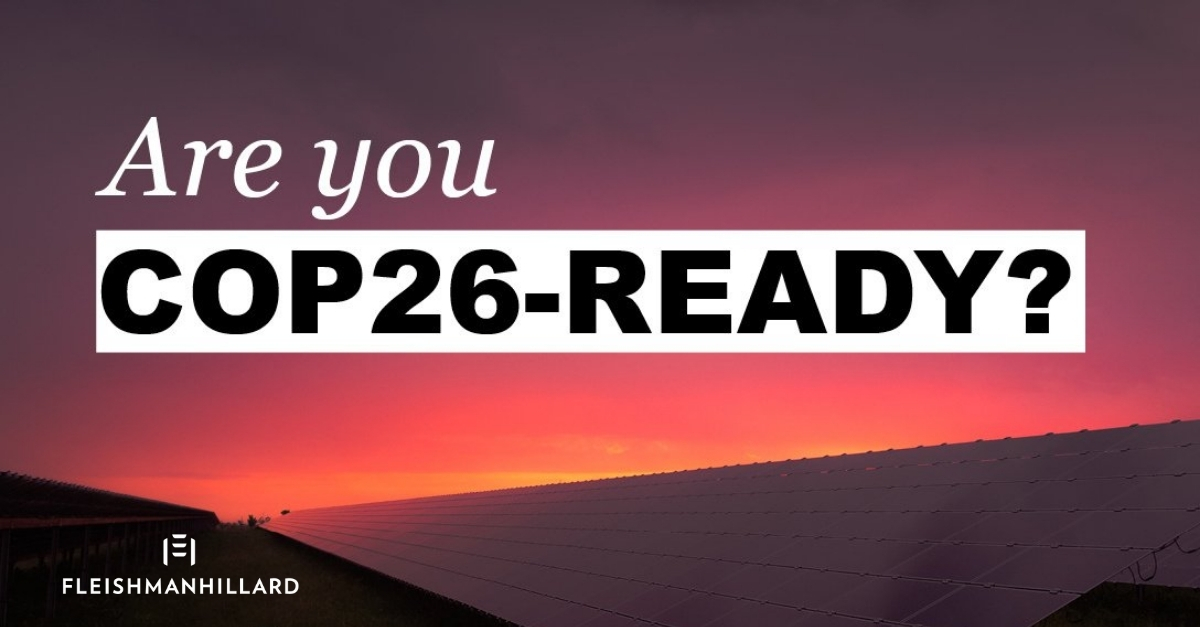Connecting to COP26 – View from Greater China
Our perspective on China’s climate approach from Patrick Yu, General Manager of FleishmanHillard Hong Kong | COP26 – View from China
President Xi Jinping’s absence from COP26 has raised concern from other delegates and stakeholders who see China as key to stopping climate change.
Xi, who has not travelled outside China since the start of the pandemic, had been expected to make a video address, but ultimately provided a written statement, emphasising three main points:
- First, he stressed the need to “preserve multilateral consensus” for which the UN Framework Convention on Climate Change and its Paris Agreement form the basic legal framework with which the international community must comply;
- Second, focus on pragmatic actions, meaning it is important to have a realistic vision, set achievable goals, and then take action;
- Third, accelerate the green transformation through scientific and technological innovation, and transforming energy resources, along with industrial infrastructure and consumption patterns.
Xi’s actions at home suggest net-zero is a major priority.
China accounts for 27 percent of global carbon emissions, almost double that of the United States in 2019, and has committed to achieving net-zero – albeit by 2060, ten years later than most countries.
Meanwhile, its recent pledge to stop financing overseas coal is significant, showing that Xi is engaged in the global climate discussion. Yet, China’s carbon emissions, coal usage and investment in its domestic coal industry will continue to rise.
Carbon emissions will peak no later than 2030.
China is heavily reliant on coal power. It is currently running 1,058 coal plants – more than half the world’s capacity – and it has 60 more under construction. Xi has said China will “phase down” coal use from 2026.
To reach net-zero, China will need to stop using coal entirely for generating electricity by 2050, replacing it with nuclear and renewable energy.
On a more positive note, China is at the forefront in the development and usage of green technology, particularly solar and wind power, and electric vehicles.
China’s solar power capacity is more than three times that of the United States, while its wind power installations were more than triple those of any other country in 2020. China ranks 7th globally in electric car sales by market share, ahead of the United States, Germany, UK, France and Japan.
While China will continue to emit greenhouse gases after 2060, it is developing programs to absorb carbon dioxide. Its forestry programs, designed to reduce soil erosion and pollution, are greening the country at a faster rate than any other country.
For now, actions at home in China rather than at COP26 are what really matter to Xi. If his plan materialises in China, the events in Glasgow will be deemed a success.
This ‘Connecting to COP26’ series is brought to you by the FleishmanHillard Cop26 Unit as part of the COP26 Daily Digest. For more information, please contact the FleishmanHillard COP26 team.
Find Out More
-
Achieving Outsized Impact by Building Stronger Country Reputation
February 18, 2025



